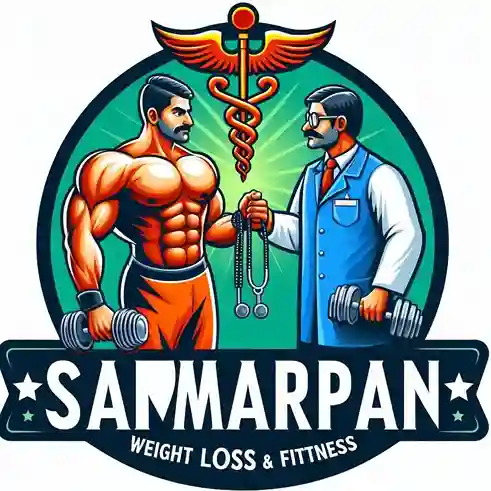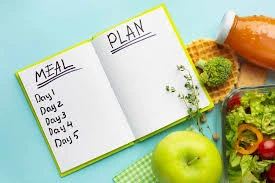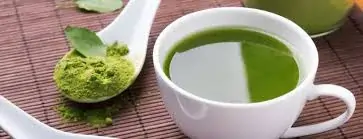Low-Fiber Diet Before Colonoscopy: What to Eat & Avoid
Introduction
The part of cereals, fruits, and vegetables the human digestive system cannot absorb is called dietary fiber. These kinds of foods can only be found in low-fiber diets. As a result, stools are less heavy, and less undigested material passes through the large intestine.
A low-fiber diet could be advised for various ailments or circumstances. This type of diet is sometimes called a restricted-fiber diet.
Low-Fiber Diet: What is it?
A low-fiber diet, often referred to as a low-residue diet, limits the amount of fiber that is consumed each day. Food that cannot be digested by your body and ends up in your gastrointestinal (GI) tract or feces is referred to as “residue”. Often, these meals are high in fiber.
The goal of a low-fiber diet is:
- The amount of labor the digestive system must do is lessened when less undigested food passes through the gut.
- lowering the production of stool to alleviate symptoms such as diarrhea and abdominal pain.
Low-Fiber Foods: What Are They?
The protein-rich component of nutrients like cereals, vegetables, and fruits that is incapable of breaking reduced is called fiber. If it remains in your colon, it could hide areas your doctor needs to see. Five days before your colonoscopy, abide by these general rules:
- Stay away from dried fruits
- Avoid cereals and entire grains.
- Choose prepared or tinned fruits and vegetables over fresh ones.
- Be sure to select service offerings made with enriched flour, white rice, and white bread.
- Consume pulp-free juices.
- Consume well-cooked, delicate meats.
The low-fiber diet’s goal:
A low-fiber diet may be suggested by your physician for the following reasons:
- Your colon is constricted. A tumor or an inflammatory condition like Crohn’s disease or ulcerative colitis could be the cause of this.
- You had surgery on your colon.
- Your digestive system is being harmed or irritated by the treatment you are receiving. Radiation, for instance, can irritate skin.
- Diets low in fiber are often short-term. After a brief period, you can often begin reintroducing additional fiber into your diet.
What Foods Are Appropriate?
For a simpler bowel preparation and a more successful colonoscopy, stick to the meals indicated in each of these categories:
Milk and its derivatives
- Buttermilk
- Custard
- Powdered or evaporated milk
- Cheeses with less fat
- Ice cream with less fat
- Low-fat or skim milk
- Sherbet
- Smooth nonfat or low-fat yogurt devoid of nuts, rinds, seeds, or berries
Veggies
- Green or wax beans,
- lima beans
- spinach
- carrots
- pumpkin
- The lettuce
- Skinless potatoes and vegetable liquid that has been strained
Meats and other foods high in protein
- Eggs
- Nut butters that are smooth, like creamy peanut butter
- Tofu Fish, poultry, and meat that is tender and cooked
Grains
- Bread,
- bagels,
- rolls,
- crackers,
- pasta, and cereals
- Cereals that have been cooked (creamy rice and farina)
- White rice
Fruits
- Fruit juice
- The majority of soft, skinless canned fruit (except pineapple)
- Peeled Apple
- Melons or ripe bananas
Sweets and snacks
- Hard candies
- Jelly-O
- Ice cream with less fat
- Simple cookies and cake
- Custard and plain pudding
- Popsicles, pretzels, and salad
Drinks
- Tea, coffee, and sports beverages (like Gatorade)
- Water
Condiments
- Mustard and ketchup
- Margarine, oils, butter, sour cream, mayonnaise, and salad dressing
- Simple gravies
- Soups made with permitted vegetables, stock, bouillon, spices, and cooked herbs
- Clear jelly, sugar, honey, and syrup
Which foods should I stay away from?
Keep clear of these kinds of meals five days ahead of to scheduled colonoscopy.
Milk & milk products
Yogurt with seeds, berries, rinds or nuts
Vegetables
- Broccoli
- Brussels sprouts
- Cabbage and sauerkraut
- Cauliflower
- Corn
- Fried vegetables
- Greens (mustard, turnip, collards)
- Mushrooms
- Okra
- Onions
- Peppers
- Potato skins
- Raw vegetables, except lettuce
- Winter squash
Meats & other protein foods
- Chunky nut butter
- Nuts or seeds
- Tough or chewy cuts of meat
Grains
- Wild rice and brown rice
- Cereals produced with entire grains
- Grain products derived from nuts or seeds
- Pasta, crackers, rolls, and breads made with whole wheat or whole grains
Fruits
- All raw fruits
- Canned berries, canned cherries
- Raisins and other dried fruits
- Prunes and their juice
Sweets, Snacks, and Condiments
- All sweets produced from whole grains
- Jam, preserves, and marmalade
- Horseradish, pickles, olives, and relish
- Popcorn
Meal schedule:
Meals that fit into a low-fiber diet include the following examples:
Morning meal
Buttered white bread, hard-boiled eggs, and sugar-free vegetable juice
Cornflakes, puffed rice, and porridge are examples of low-fiber morning cereals.
Lunch
Tuna sandwich with chicken breast, mayonnaise, white rice, and an unseeded white bun
Dinner
Salmon with mashed potatoes and a little seasoning, or an omelet with roasted sweet potatoes
How can I resume consuming fiber?
Short-term symptom relief may be possible by consuming less fiber. When these sensations subside, it’s crucial to resume consuming fiber progressively.
According to the authors of a 2022 review individuals with irritable bowel disorder (IBD) may benefit from a high-fiber diet in several ways. These could consist of:
- lowering inflammation
- boosting immunity
- promoting general health and gut microbiota
- lowering the chance of colorectal cancer development
A tiny serving of one high-fiber item daily is a good place to start. You can then resume eating it if this doesn’t result in any symptoms.
Summary
If you have a digestive system-related illness, a low-fiber diet might help you control your symptoms.
It’s crucial to only adhere to a low-fiber diet while being closely monitored by a medical practitioner. They can assist you in choosing the diet that will work best for you.
FAQs
What foods have the least amount of residue?
Low-residue foods include lean, tender meats, peeled fruits and vegetables, white bread, and white rice.
Does rice have a low residue?
White rice leaves little residue. When following this kind of diet, brown rice should be avoided because it is regarded as having a high residue.
What distinguishes a low-residue diet from a low-fiber diet?
A low-residue diet has more restrictions than a low-fiber diet, which excludes harder meats and beans and limits dairy consumption to no more than two cups per day.
How may a low-residue diet be stopped?
As you transition off the diet, it’s best to gradually increase your regular consumption of fiber and make sure you stay hydrated.
Is oatmeal compatible with a low-fiber diet?
Soluble fiber makes up the majority of oats. The American Cancer Society states that this type of fiber is less prone to irritate the intestines than insoluble fiber. The best course of action, though, is to have a modest amount of oatmeal and then observe your feelings. Avoid eating oatmeal if it causes any problems.
References
- The do’s and don’ts of a low-fiber diet. (n.d.). Mayo Clinic. https://www.mayoclinic.org/healthy-lifestyle/nutrition-and-healthy-eating/in-depth/low-fiber-diet/art-20048511
- Whelan, C. (2023, December 20). How to Eat (and Recover from) a Low Fiber Diet. Healthline. https://www.healthline.com/health/low-fiber-diet#faq
- Low-Residue diet: foods, menus, and more. (n.d.). WebMD. https://www.webmd.com/ibd-crohns-disease/crohns-disease/low-residue-diet-foods







